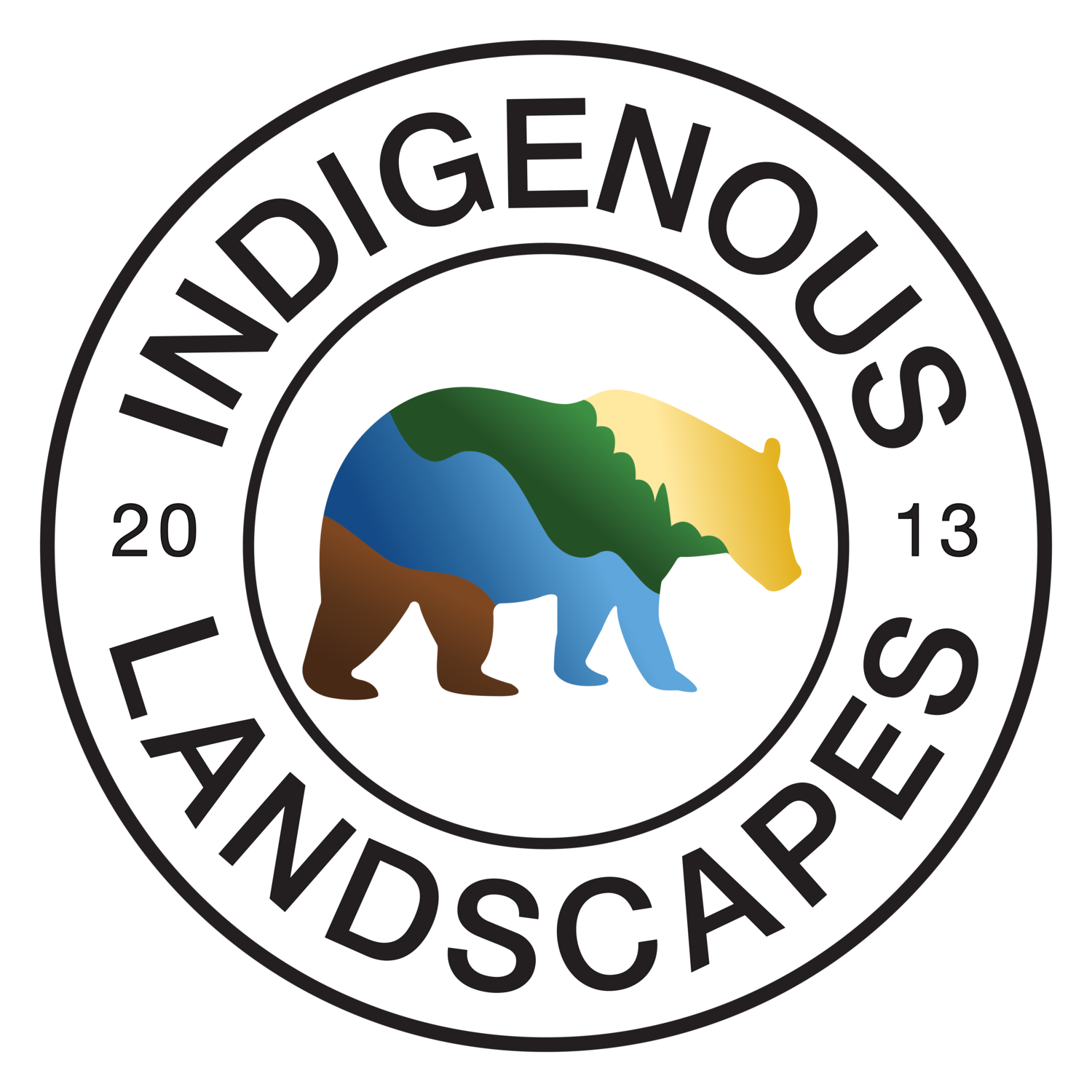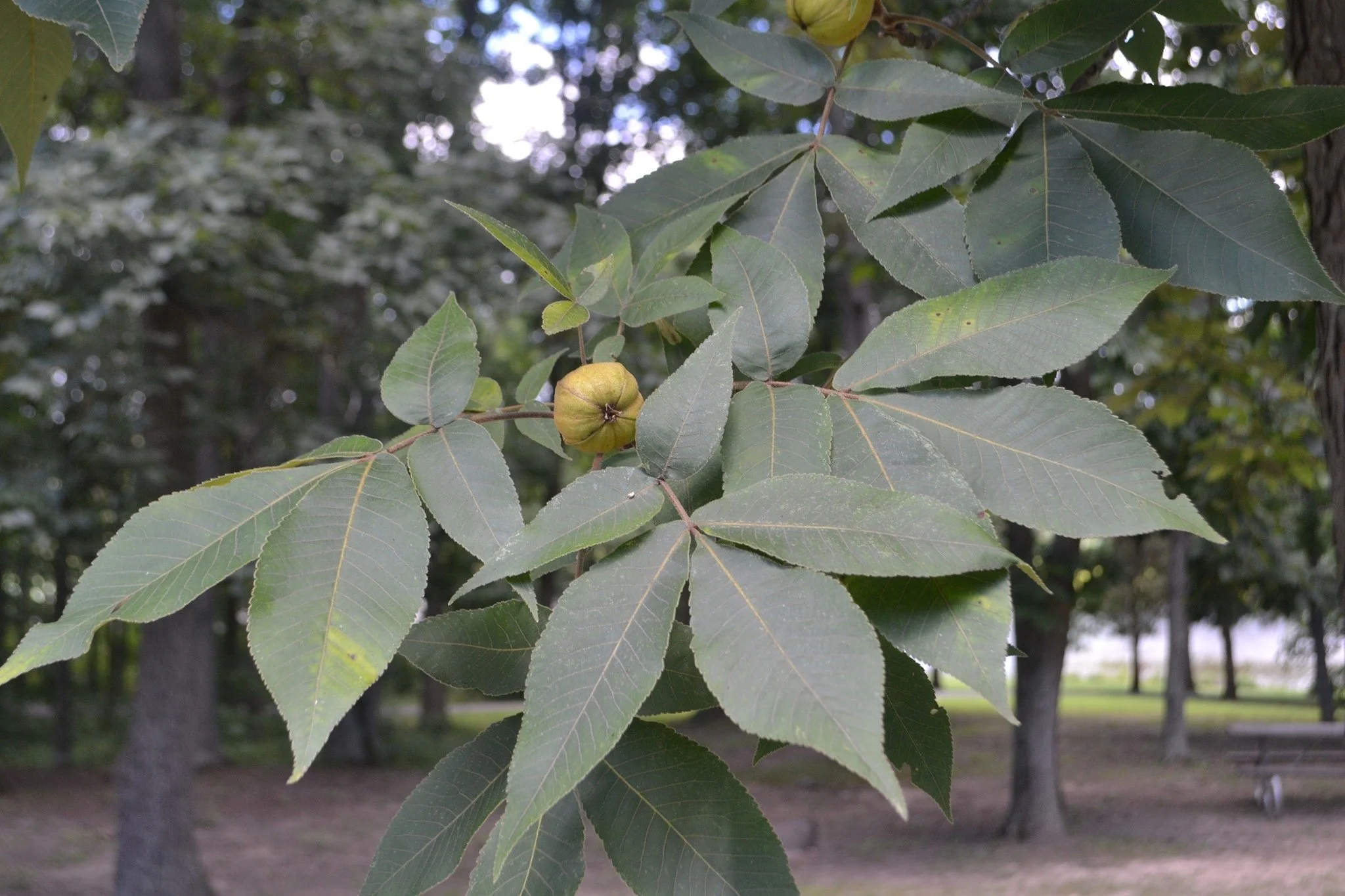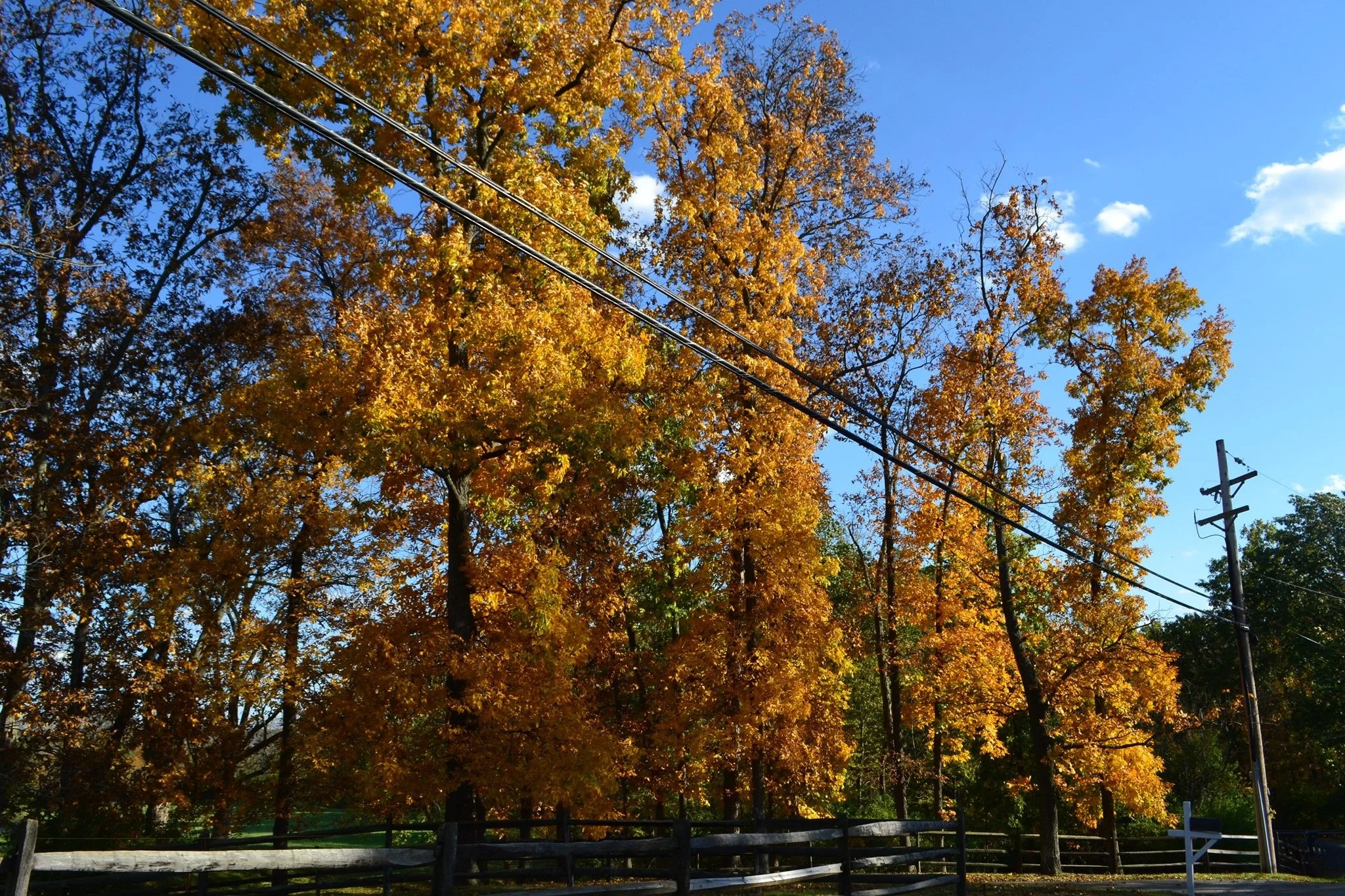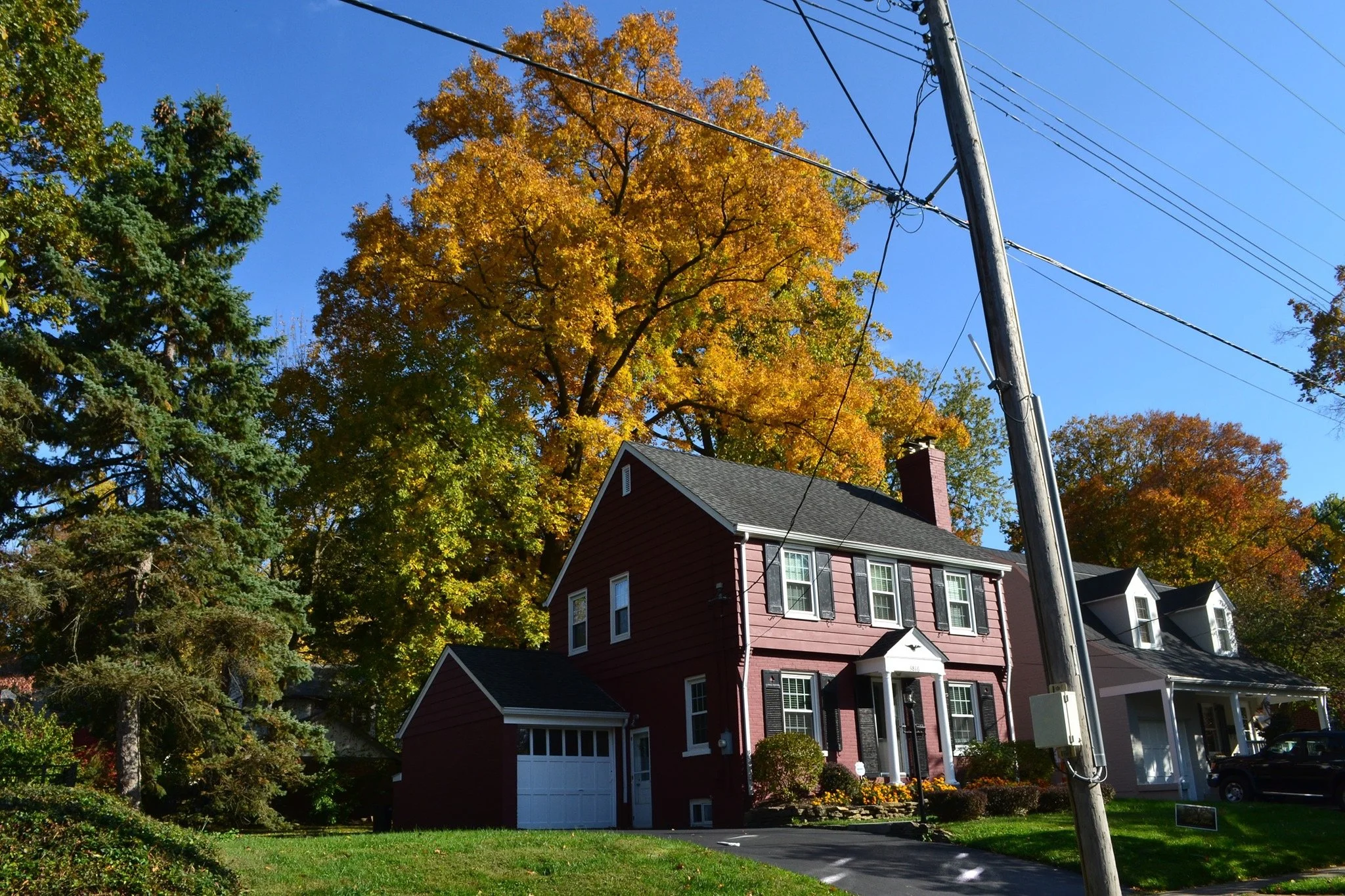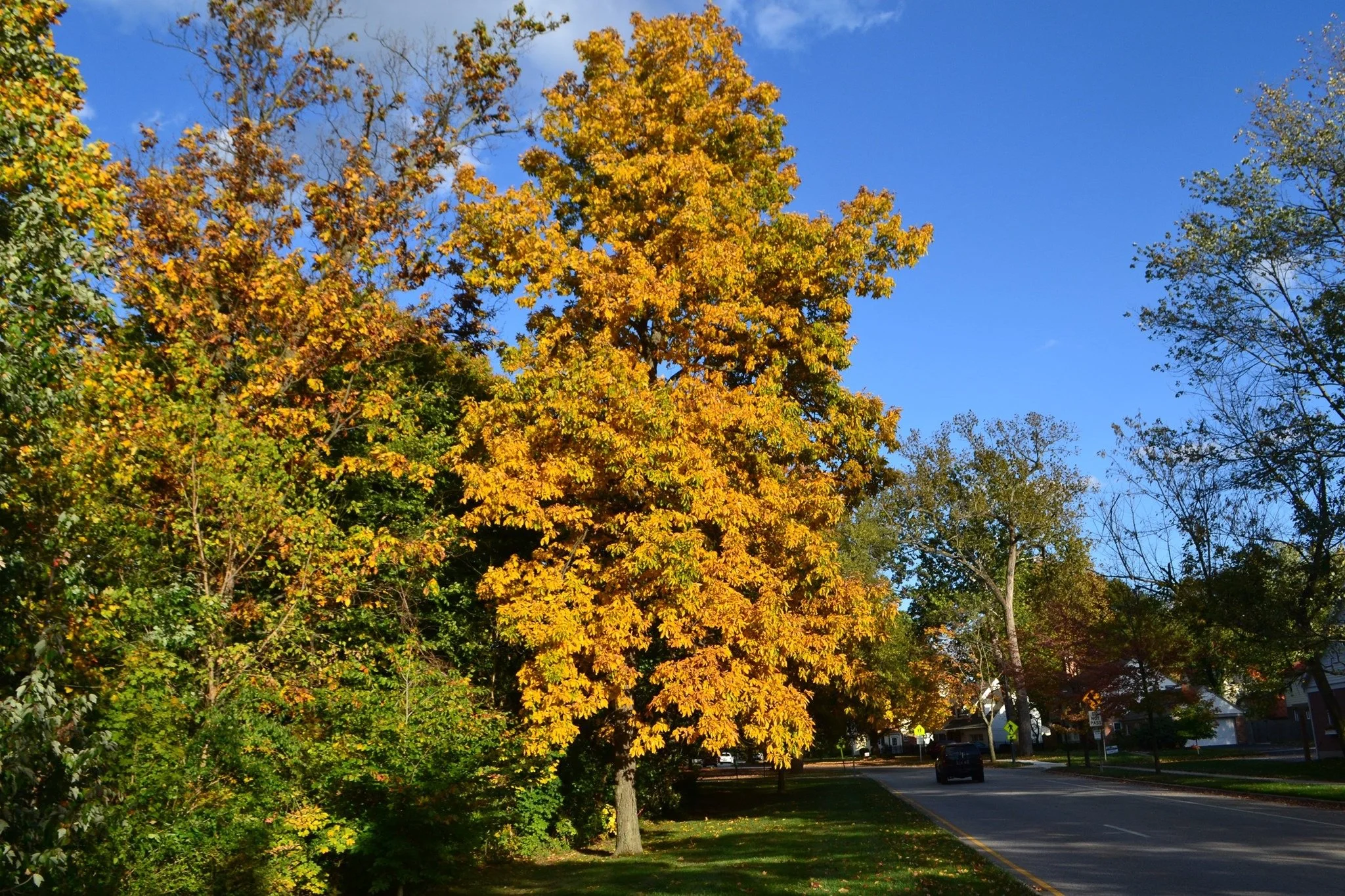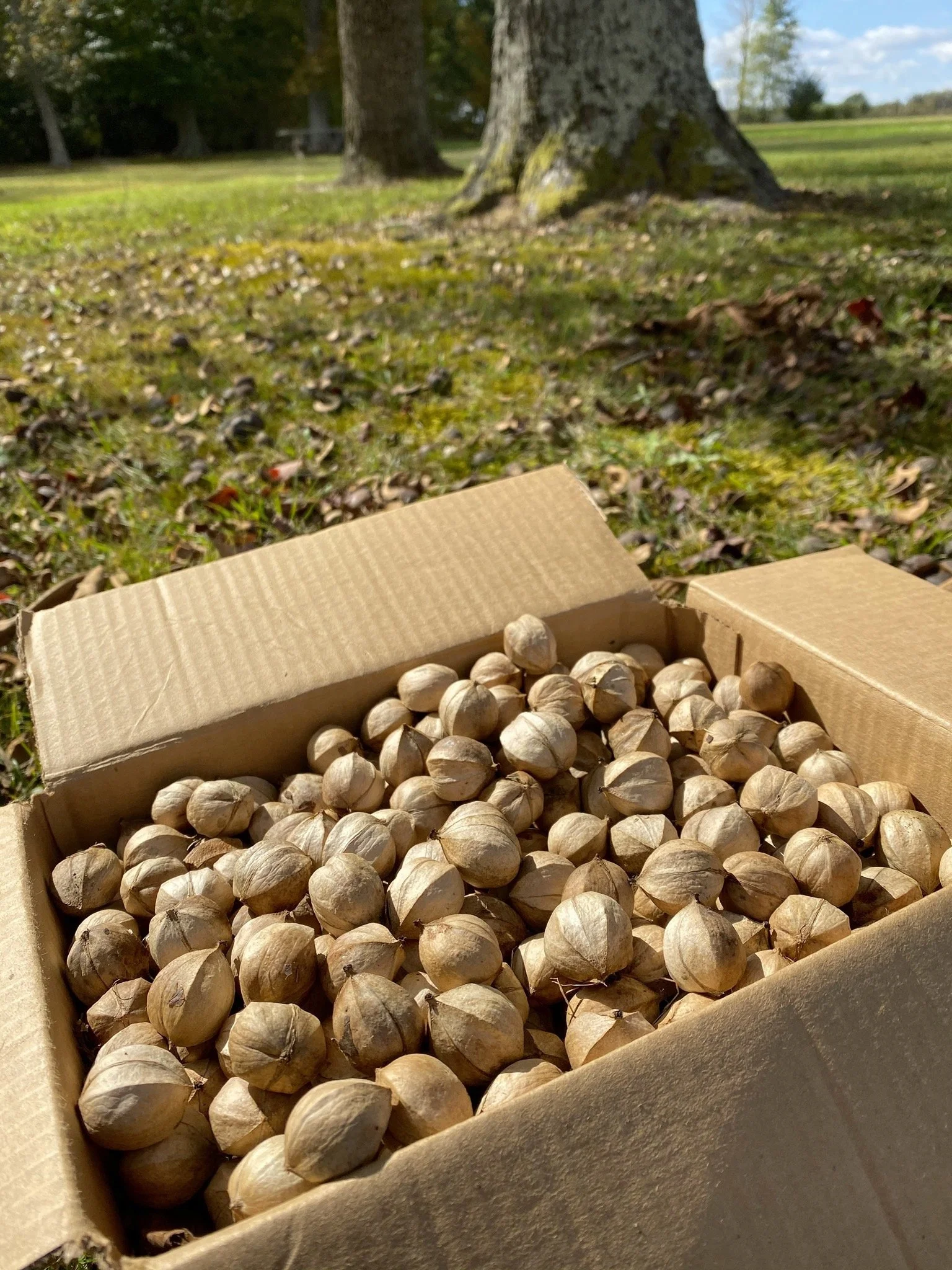Leaflet of 5 with shaggy bark means it's Shagbark Hickory. Leaflet of 7 with shaggy bark means it’s a Shellbark Hickory.
Shagbark Hickory (Carya ovata)
Shagbark Hickory occurs as a common species in strongly acidic soils to near neutral PH (5-6.8PH). It is a consistent indicator of acidic soil where naturally occurring and associated with one or more these following species; Sweet Gum, Black Gum, Sassafras, Mockernut Hickory, Smooth Hickory (Carya glabra), Pin Oak, Black Oak, Scarlet Oak, Red Maple, or Shingle Oak. It is an indicator of weakly acidic or neutral soil (6.5-7.0 PH) when naturally associated with one or more of the following species; Chinquapin Oak, Shumard Oak, Bur Oak, Shellbark Hickory, Kentucky Coffee Tree, or Blue Ash. Because of its preference for acidic soil and adaptability to low or high moisture availability and poorly drained soils, it finds a place in many forest types. It’s co-dominant in Acidic Forested Wetlands featuring Pin Oak, Swamp White Oak, Beech, Green Ash, Red Maple, Sweet Gum canopies; it’s also very shade tolerant in these Acidic Forested Wetlands. At the same time it can be found in very well drained acidic soils. The common denominator is acidity, not moisture level. In restoration it should only be planted in soils of a PH less than 7.0 to mimic or match its original niche.
A stand of Shagbark Hickory that naturally regenerated in a private residential lot.
Shagbark Hickory fall colors are similar to Shellbark, sometimes Yellowish-Gold, sometimes brown it depends on the year. Shagbark Hickories are more columnar than Shellbark Hickories as Shellbark Hickory often has a slightly more spreading, broader canopy shape. This allows you to fit Shagbark Hickory in tighter spaces. Both Shellbark and Shagbark have similar fire tolerance so they’re both applicable to Savanna plantings though Shagbark should be planted in acidic soil Savannas. Shagbark Hickory has more dry soil tolerance than Shellbark Hickory, though it’s also applicable to acidic forested wetland forest types where Pin Oak, Swamp White Oak, Red Maple, Sweetgum, and Green Ash grow. Not recommended for house cooling as the limbs get too heavy and tall above a house to risk planting near a house. Nuts can be crushed and simmered for at least 6 hours to make a savory broth-like product. Bark can also be used to flavor syrup. Height is 55’-80’. Applicable to all hillside aspects; N, E, W, and S or flatter ground. Wind Pollinated.
Defining Characteristics
What separates Shagbark from all other hickories except for Shellbark Hickory is the mature form of it's bark. In the growing season, use the leaflet of 5 paired with the bark to separate it from Shellbark. In the winter, use the nut size comparisons + bark, though nut comparison is less reliable to the inexperienced eye.
A large Shagbark in the backyard of a home
Bark of Shagbark hickory
More shagbark Fall color
Shagbark nuts - easy to gather in mass if you find hickories in open fields away from the reach of squirrels. Squirrels rarely cross wide open fields because of the danger of foxes, coyotes, bobcats, and birds of prey. Squirrels must stay sprinting distance away from some type of cover such as a house or tree.
Key for the Maps Above
Light Green = Reported to an herbarium for the county as native and wild occuring.
Teal = Reported to an herbarium for the county as present and introduced by man.
Yellow = Reported to an herbarium for the county as present but rare.
Green = Reported to an herbarium as present in the state.
Orange = Once reported to an herbarium as native but now considered extinct in that county.
When considering planting a native plant, always google search the scientific name aka latin name with the word “bonap” to look up its native range as reported by country records submitted to herbariums. If the plant is native within 100 miles of your location it will be more ecologically applicable than plants native further away. The further away a plant is native, often, the less ecologically applicable it becomes.
